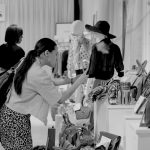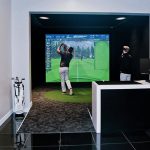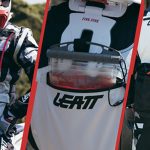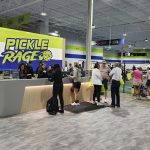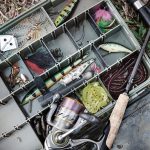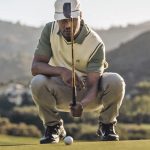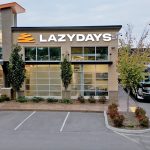There were a few hints about how adidas-Salomon will start to function as it sheds the Salomon business and moves forward with the acquisition of Reebok. The company will start to look a lot more like its primary competitor in Beaverton, with both sporting a stable of brands that include a golf business, a hockey business, a brown shoe business, a mass retail brand, and a secondary athletic footwear brand that can be positioned to complement the primary brands positioning as a performance brand.
At the companys sixth annual investor day held last week in Herzogenaurach, Germany, company chairman and CEO Herbert Hainer said that adidas will be more performance-focused going forward. He felt there would be real upside from the elimination of distractions outside the athletic footwear business as they close the door on the Salomon era.
adidas reiterated its forecast of 20% net income growth for the year and expects to see sales growth in the mid- to high-single-digit range, according to management presentations at the conference.
The new company, which Hainer referred to as the “adidas Group,” is starting to work on integration, with Michael Rupp heading the adidas team and Sharon Bryant, a 25-year Reebok vet and current CFO of Rockport, heading the Reebok integration team.
Management also said it expected to maintain double-digit net income growth after the Reebok acquisition, at least for the medium-term, while gross margins are expected to range between 46% and 48% of sales over the next three years.
The Reebok deal is expected to give adidas an additional 400 million to 500 million in its marketing budget each year, a number that will surely be utilized to bolster adidas efforts against Nike.
The marketing dollars for 2006 will be invested heavily against the 2006 World Cup, which will held in the companys home country next summer.
Hainer said the company expects to see an increased impact of soccer sportswear sales in Q4 this year through the second quarter of 2006. adidas reiterated its forecast that soccer-related sales would exceed 1.0 billion ($1.2 billion) in 2006.
“We are already seeing strong demand for these (soccer) products across the board,” said Erich Stamminger, the companys marketing chief and current head of North America operations. “We will achieve all-time record sales in each and every category of our football (soccer) business.” Part of the effort includes monthly product releases of soccer product until the World Cup. adidas expects to sell more than six million World Cup match balls.
Stamminger also expects to see adidas increase global market share in the soccer category beyond their current 35% stake. He sees adidas share of the German soccer market hitting the 50% mark next year, up from a 47% share this year and 45% last year. They expect to see Nike lose share. He said that soccer was “in their DNA.” The companys primary campaign will center on its +10 initiative, which will feature key soccer athletes +10, a reference to the premise that you can achieve more with the team than you can achieve alone.
The other key priority will be on the adidas_1 product, which will be expanded in the running category next year and also added to basketball for the first time. Stamminger said the program was part of the companys commitment to deliver a totally new or significant product innovation every year. The company sold all 60,000 pairs of the $250 running shoe they planned for 2005, but will increase that number to 150,000 pairs in 2006. They expect to see 20 million in revenues from the project next year.
The marketing chief made a very bold statement, declaring that adidas_1 will replace all traditional cushioning as the industry standard by 2010 and that adidas intelligent products in footwear, apparel, and equipment will dominate the industry by the same year.
Pointing to the success of their other technologies, Stamminger said that 65 million pieces of Clima-Cool and A3 products will have been sold by the end of 2006. Management said there were a number of skeptics when they first projected sales of more than one million pairs of Clima-Cool shoes, but adidas will ship 20 million pieces of footwear and apparel in the Clima-Cool line this year.
Stamminger also talked up the adidas partnerships with Stella McCartney, Polar, and Porsche. While Polar will add to the technical solution (a new Fusion Integrated Training System will debut in 2006 for 650), the Porsche program is expected to provide both financial and brand image upside and the McCartney range is apparently raising the level of fashion appeal with female consumers and netting significant returns.
The adidas by Stella McCartney collection reportedly sold through 24% at Nordstrom the first day and posted a 50% sell-through at Bloomingdales on the first day it debuted there. The range was also the best-selling product at adidas owned-retail stores. At Japans Isetan, consumers lined up to buy the collection, with 1,000 customers spending $100,000 on launch day. The line sold through 70% in two weeks in Shanghai and was reportedly the best selling range in London for any opening. The potential for the range was pegged at about 100 million.
Sport Heritage has also been a strong story for the adidas brand, posting a 40% increase in year-on-year sales through June, with equal gains coming from both footwear and apparel. The Superstar is celebrating its 35th anniversary with a half million pairs of the Superstar 35 sold. Sales are up more than 40% for this classic shoe that was embraced by basketball players in the 70s and skateboarders in the 90s. Stamminger said that nearly 5.5 million pairs have been sold year-to-date in 2005. In total, Sport Heritage is expected to deliver 1 billion in sales for 2005.
Owned-retail is an obvious focus for the adidas brand, with about 650 stores generating 750 million in sales this year. Sales at owned-retail were up more than 30% for the June YTD period, generating roughly 330 million is sales. The ownedretail business accounts for approximately 12% of brand adidas revenues, but a higher gross margin contributes more to the bottom line. There are now 250 Sport Heritage and Sport Performance stores.
From a regional perspective, adidas pointed to North America as a region that “has never been stronger.” While the team in Portland was described as “cautiously optimistic” during his presentation at last years conference, Mr. Stamminger said that the success this year has resulted in a “new optimism” in the U.S.
He said they changed the pace and spirit of the brand and that retailers “sense it” and “want to be part of it.”
Stamminger said the growth was coming from all channels and with “almost all customers.”
Profits in the region were up more than 200% in H1.
Stamminger pointed to a new management tracking system that is measuring progress each week by account, category, markets, and channels. He said the real difference in the market this year is the focus on landing the brand versus the item selling of the past. He said adidas can grow market share even in a stagnating market.
The North America region has seen sales growth over the last four quarters average in the double-digits, while gross margins have risen a full point. They see picking up one to two points of total share for the year, based on SportScanINFO data, which they said they use exclusively in the U.S. Total share is currently pegged at 11% of the market.
He pointed to more demand at over $100 that is resulting in a win-win situation for retailers and the brand. He sees a return to pre 9/11-price-points. The A3 Megaride saw double-digit sell-throughs at $100.
Sport Heritage will grow more than 20% in the U.S. in 2005, a growth level that is expected to continue into next year.
adidas push to the World Cup wont just play out in Europe either as the brand rolls out 70 soccer shop-in-shops in specialty stores in the U.S. Over 200 merchandisers and product trainers are expected to help fuel sales in the shops.
Total sales at U.S. owned-retail is up over 30%, with double-digit comp store sales gains through the first half. All stores are in positive comp territory. There is a new Irvine, Calif. store opening in November and the company will be opening five more Heritage stores “shortly.” Stamminger said they wont go after a womens owned-retail strategy as Nike has, rather he sees focusing on partnering with current retail partners.
One key revelation was that Mr. Stamminger will be replaced as chief of the North America group. A new president is expected to be named by year-end. He will remain responsible for the U.S. as a member of the Executive Board.
Hainer said the Logo Athletic brand, which Reebok has positioned in the mass retail channel with a launch last spring at Target, was an interesting opportunity. He said it gave them “upside for the future” and gave the company more alternatives.
During the question and answer period Hainer was quizzed about the Reebok deal and what they learned from previous integration efforts. While he pointed to the success of the TaylorMade deal, he acknowledged the issues with Salomon and said it was his fault. He went on to say that Salomon was “too French” in its management thinking, which limited its international opportunities. He said they left Salomon alone for too long and didnt pay attention to the details.
“We wont make the same mistake twice,” said Hainer.
Hainer said he saw gaining more on the sales and marketing front in the Reebok deal, but not as much is expected to be wrung out of the back-end of the business. Reebok uses more distributors in a number of regions that will presumably need to be converted to direct organizations under the adidas model.
>>> Will the new president come from outside, inside, or from Reebok? Should be interesting
>>> Does not making the same mistake twice mean more direct control over their latest acquisition? Brand positioning will be critical in making the Reebok deal work so neither brand sees too much dilution
*Editors Note — SEW will cover the balance of the investor conference next week, including key priorities of all other regions and insight into the happenings at TM-aG.




